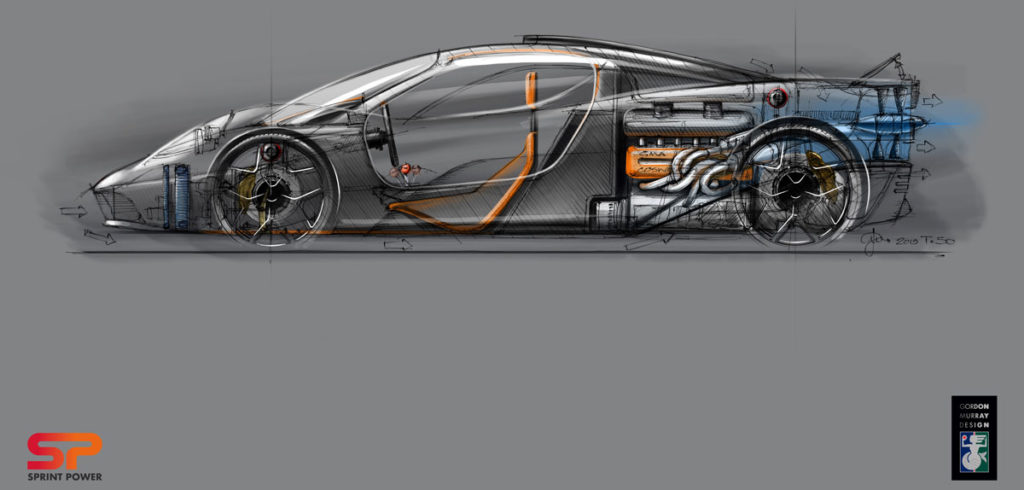Vehicle propulsion specialist Sprint Power has been chosen by Gordon Murray Automotive to develop and integrate the electrical systems for its T.50 supercar.
The brief is to create a lightweight, durable electrical architecture. As part of the project Sprint Power is also developing lightweight, cutting-edge battery technologies, which will be tested in the supercar.
Founder and CEO of Sprint Power Richie Frost commented, “We are very privileged to be working with the team at Gordon Murray Automotive, their fantastic work ethic and approach helps our team to perform at the highest level. Like Sprint Power, they seek out innovative solutions, thinking of inventive ways to achieve more while capitalizing on the collective strengths of the team to deliver great results. I believe this is something that has filtered down from Gordon’s days in top tier motorsport.
“There are members of our team who have worked closely with Gordon Murray Design for the past decade, including me. Today we are treated as an extension of their technical family. It’s great to be playing such an integral role in the development of the T.50 while showcasing our technical capabilities.”
Sprint Power began working on the T.50 supercar in early 2019 and has ramped-up deployment of its highly-skilled engineering team to meet the demanding timeframes required by the project.
The company is working on novel electrical systems and battery technologies to meet the full functional safety requirements of a production road car. The new supercar’s electrical systems are being developed to be as light as possible. This is crucial to keep the T.50’s weight below 980kg – around a third lighter than the average supercar – making it the lightest car in its class, ever.
Sprint Power is preparing electrical systems to cope with the T.50’s high-performance and power requirements. The new V12-engined supercar will produce a standard 650hp and be capable of 12,100rpm, the highest-revving engine ever used in a production car.
Sprint Power engineers have been busy validating a number of innovative concepts and groundbreaking technologies to help achieve these performance figures in time for the start of prototype vehicle testing.


